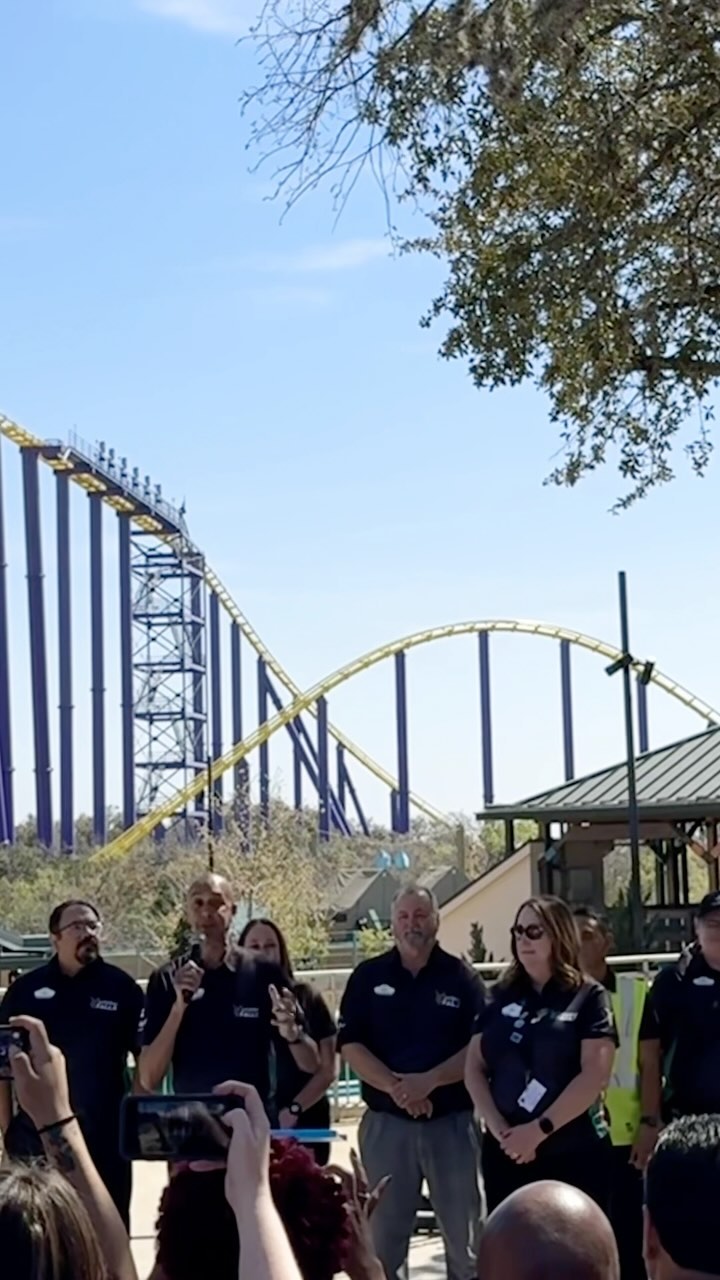– Launch of Catapult Falls at SeaWorld San Antonio, the world’s first launched flume coaster
– Intersection of thrilling amusement park experiences with zoological education and wildlife conservation
– Advancements in theme park technology and design, exemplified by Catapult Falls
– Challenges in balancing entertainment with the ethical treatment of animals in a zoo setting
– Contribution of theme parks like SeaWorld to conservation efforts and public awareness of aquatic wildlife
Today marked a significant milestone in theme park innovation as SeaWorld San Antonio proudly opened the gates to Catapult Falls—the world’s first launched flume coaster. This cutting-edge attraction combines a roller coaster’s exhilaration with the refreshing water ride splash, offering adventure enthusiasts a truly groundbreaking experience. But beyond the thrills and spills, this addition to the park holds deeper implications for zoology, zoo management, and wildlife conservation.
The inauguration of Catapult Falls is a testament to the relentless pursuit of novelty and excitement within the amusement park industry. This ride has a unique propulsion system that accelerates riders uphill before sending them down a thrilling descent, culminating in a spectacular splash. This technology demonstrates the potential to elevate the traditional water ride format to new heights, providing visitors with unprecedented dynamic entertainment.
The complex design of such a ride requires a harmonious blend of mechanical, hydraulic, and structural engineering. The launched flume coaster is a step forward in the field, advancing the integration of water and coaster elements more seamlessly than ever before. Safety, efficiency, and rider experience stand at the forefront of this design, showcasing what’s possible when engineering meets creative vision.
However, as excitement builds around this novel attraction, it is crucial to discuss the role of modern zoos and aquariums like SeaWorld in promoting wildlife conservation. Amidst the construction of state-of-the-art rides, facilities like these have a dual role—to entertain and to educate. With its blend of animal exhibits and theme park attractions, SeaWorld finds itself at the crossroads of these responsibilities.
Animal welfare and conservation ethics play a central role in zoo management. The facilities housing animals must provide for their physical needs and contribute positively to their psychological well-being. Zoos and aquatic parks are becoming increasingly sophisticated and strive to mimic natural habitats more accurately, enabling species to exhibit normal behaviors.
Furthermore, these institutions often engage in scientific research, providing valuable insights into animal health, behavior, and genetics. The data gathered can support conservation efforts in the wild, assisting with species survival plans and habitat restoration projects. Parks like SeaWorld must balance showcasing biodiversity and ensuring each species thrives in an environment adhering closely to their natural needs.
Attractions like Catapult Falls impact more than just the visitor experience. They draw crowds, increasing exposure to the park’s conservation messages and educational programs. The appeal of such innovative rides can be harnessed to direct attention to broader ecological narratives, engaging guests in discussions on topics like ocean health, the threats to marine species, and what can be done to protect aquatic ecosystems.
SeaWorld has been proactive in its conservation efforts by supporting rescue and rehabilitation programs for marine animals. Over the years, these programs have provided care for ill, orphaned, or injured wildlife to return them to their natural habitats whenever possible. The funding and awareness generated by park admissions play a significant role in sustaining these activities. Thus, each ride, such as the freshly launched Catapult Falls, underpins the park’s capacity to aid in conserving marine life.
The long-term effects of such rides on both guests and the institutions that house them can be profound. By fostering a connection between humans and wildlife, parks can motivate a new generation of conservationists. Those who come for the thrill rides leave with a sense of exhilaration and, ideally, a deeper appreciation for the natural world and its inhabitants.
The grand opening of Catapult Falls at SeaWorld San Antonio marks a pivotal moment in the evolution of theme park attractions. As guests rush to experience the excitement of the world’s first launched flume coaster, it’s important to remember and highlight the broader context of such innovations. These attractions are more than just adrenaline-fueled diversions; they are part of a complex interplay between entertainment, education, and conservation. The success of Catapult Falls will hopefully not only redefine theme park experiences but also bolster SeaWorld’s ongoing commitment to marine life conservation, bridging the thrill of amusement with the vital message of environmental stewardship.
*****
Source Description
Today, we celebrated the Grand Opening of Catapult Falls, the World’s First Launched Flume Coaster. Adventure is here and only at SeaWorld San Antonio.
Have you ridden yet? 🌊🤩


